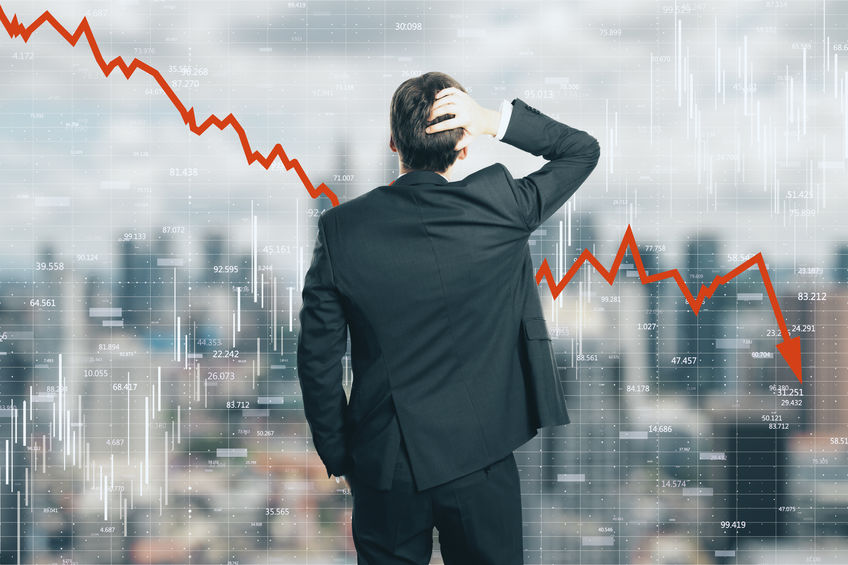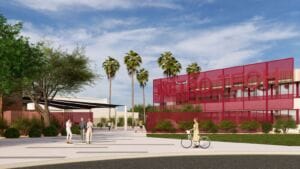At the beginning of the year, our economic theme was “Light at the End of the Tunnel.” The promise of vaccination rollouts, re-opening economies, and the combination of pro-cyclical fiscal and monetary policies indicated that there was light at the end of the COVID tunnel. Our expectations at the beginning of the year were for robust economic activity in 2021, with a real GDP growth estimate of 4 – 5%.
Now, late in the year, our theme has played out. However, a new question has emerged. With the Delta variant, labor and supply shortages and some stimulus programs expiring, will economic activity head back into the tunnel? We don’t think so. There may be a pause, but nothing like the tunnel experienced last year with economies closing.
READ ALSO: Why Arizona is recovering jobs lost during the pandemic faster than most
We anticipate a meaningful recovery; we now expect GDP to be between 5.75 – 6.50% in 2021. We don’t expect the economy to head back into the tunnel, however we do expect growth in the second half of the year will be slower than the first half. The COVID Delta variant is disrupting business and school reopenings, supply chains and return-to-office plans. These issues, along with waning stimulus, should place economic growth on a slower trajectory.

Economy
Numerous variables continue to suggest we are out of the tunnel:
Economic Activity. Since the third quarter of 2020, the US economy has been experiencing the Great Recovery, robust GDP growth, well above the 10-year average. Naturally, after a severe contraction followed by a Great Recovery, economic growth will eventually slow. The last cycle is a good example; after the Great Recession in 2008-09 we never got the Great Recovery, but economic activity did rebound early in the cycle before slowing.
Labor Market. Non-farm payrolls increased by 3.6 million in the first half of the year. Today, there are 10.9 million job openings and the unemployment rate stands at 5.2%. By year-end, we expect unemployment to be below 5.0%. There is clearly momentum in the labor market and jobs are available.
This year, monthly job growth has averaged 586,000. In August payroll growth only increased by 235,000, perhaps due to concerns around the Delta variant Today 50% of small business owners are reporting that filling open positions is their number one concern. We may not be headed back into the tunnel, but COVID concerns may hinder payroll growth for the remainder of the year and begin to weigh on the economy. Sustained labor shortages could negatively impact economic activity but we do think this will be temporary as vaccinations increase.
Finally, the expiration of enhanced unemployment benefits could boost the labor supply and hiring. In early September, approximately 7.5 million people lost their enhanced unemployment benefits. We don’t believe this alone will be a sea change for the labor market. Half of the states terminated enhanced unemployment in the summer, yet there was little evidence of a material change in the labor market.
Some variables are sending mixed messages, suggesting a pause in GDP growth:
Consumer Confidence. The University of Michigan Consumer Sentiment Index plunged in August to the lowest level since December 2011. The spread of the Delta variant clearly is hindering confidence. The significant drop of 10.9 points is concerning because historically, similar drops have been associated with recessions. If the COVID concern curtails future spending plans, GDP growth could pause.
• Starting in July, personal consumption data showed signs of weakness. July retail sales came in below expectations, dropping 1.1% month over month. At the time, it appeared consumers spent more on services and less on goods. The resurgence of COVID presents a risk to spending on services. Numerous companies in the hospitality and leisure industry have announced a reduction in services due to the lack of demand.
The aforementioned enhanced unemployment benefits were providing $30 billion a month to consumers. Today, unemployment benefits are approximately $3.5 billion. No doubt this money was spent supporting consumption. We expect wages to eventually replace the loss of these stimulus payments.
• Supply chain disruptions will continue to deplete inventories. This may impact consumption, consumer’s that are willing and able to spend can’t if items are not on the shelf. This will impact third and fourth quarter GDP, but the issue is clearly transitory. As bottlenecks are resolved and inventories restored, spending will resume in the near future.
Financial Markets
Equities
• Stock Market. The stock market is a leading indicator. Year to date through August, the S&P 500 is up 21.5%, suggesting we are out of the tunnel. Keep in mind last year, in the middle of a global pandemic, the S&P 500 posted a return of 18.4%. Sending a signal that there was light at the end of the tunnel.
We expect the S&P 500 to produce returns in the 16-22% range in 2021 and 7-10% in 2022. We do expect a correction, which is normal and healthy.
• Corporate Earnings. Corporate profits surged over 40% year over year, the fastest pace since Q4 2009. A significant increase was expected given a year ago earnings contracted by 20%. Accommodative financial conditions and pent up demand should continue to support earnings growth.
Fixed Income
• Federal Reserve. The Federal Reserve has repeatedly suggested that patience is warranted in changing monetary policy. Slow job creation and recent moderation in inflation support the Fed’s posture. We do expect the Fed to announce a tapering plan later this year. It is important to note that tapering is not tightening. Short interest rates should be on the rise in early 2023 and longer-term rates should modestly increase throughout the year.
Risks
• The Fed and the markets appear to be discounting the threat of inflation. Some inflation will be transitory, lumber and corn are perfect examples of transitory inflation. Wage inflation may be less so and a threat to corporate margins.
• Shortages of both labor and inputs may weigh on GDP growth in the second half of the year. Shortages may keep inflation above the Fed’s target into 2022 and possibly 2023.
Conclusion
We are coming out of the tunnel, economic activity will naturally moderate as the cycle matures. We think GDP will end the year around 6% and slow to 4% in 2022.
Historic cycles may give us some clues to the future. While this cycle is a bit unique due to the pandemic, nevertheless, since WWII the average cycle has lasted 54 months. With that in mind, the current cycle could be moving into its last two thirds. History tells us that equity performance moderates in the last two thirds of the cycle yet returns have been far superior to bonds and cash.
We may see some slowdown in the data as the economy deals with the Delta variant, shortages, and inflation. Offsetting these issues: continued strong demand for goods, lean inventories, and low borrowing costs will support GDP growth. We are in the Great Recovery phase and the phase will continue into 2022.
KC Mathews is chief investment officer with UMB Bank.




